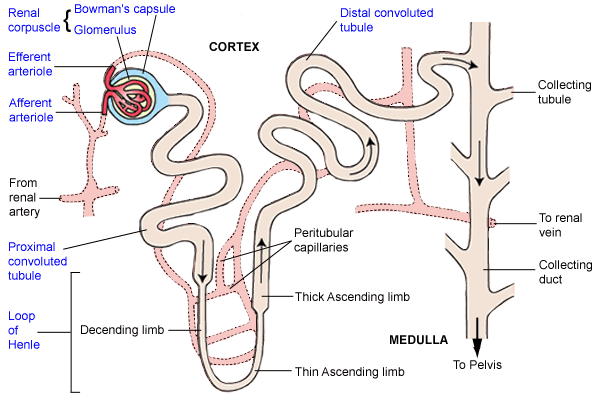
Parts of a Nephron:
The nephron is the functional and structural unit of the kidney that filters blood, balances electrolytes and produces urine. Each kidney contains roughly one million nephrons that are organized into different parts.
Parts of a Nephron:
1. Glomerulus: This is a tuft of capillaries surrounded by Bowman’s capsule. It is the first part of the nephron that blood passes through, and it filters out waste products and extra water from the blood.
2. Proximal Convoluted Tubule: This is a long, coiled tube that reabsorbs glucose, amino acids, and other molecules from the filtrate. It also secretes potassium and hydrogen ions.
Loop of Henle: This is a U-shaped tube that helps regulate the amount of salt and water in the body. It also helps create a concentration gradient in the medullary interstitium, which allows for the reabsorption of water.
3. Loop of Henle: This is a U-shaped tube that helps regulate the amount of salt and water in the body. It also helps create a concentration gradient in the medullary interstitium, which allows for the reabsorption of water.
he glomerulus is responsible for filtering blood and producing filtrate.
4. Distal Convoluted Tubule: This is a long, coiled tube that helps maintain the body’s acid-base balance. It also helps regulate the amount of potassium and hydrogen ions in the body.
Peculiarities of a Nephron:
- Each nephron is made up of two unconnected parts: the renal corpuscle and the renal tubule.
- The renal corpuscle is made up of the glomerulus and Bowman’s capsule.
- The renal tubule is made up of the proximal and distal convoluted tubules, as well as the loop of Henle.
- The glomerulus is responsible for filtering blood and producing filtrate.
- The proximal and distal convoluted tubules are responsible for reabsorbing molecules from the filtrate.
- The loop of Henle is responsible for regulating the amount of salt and water in the body.
